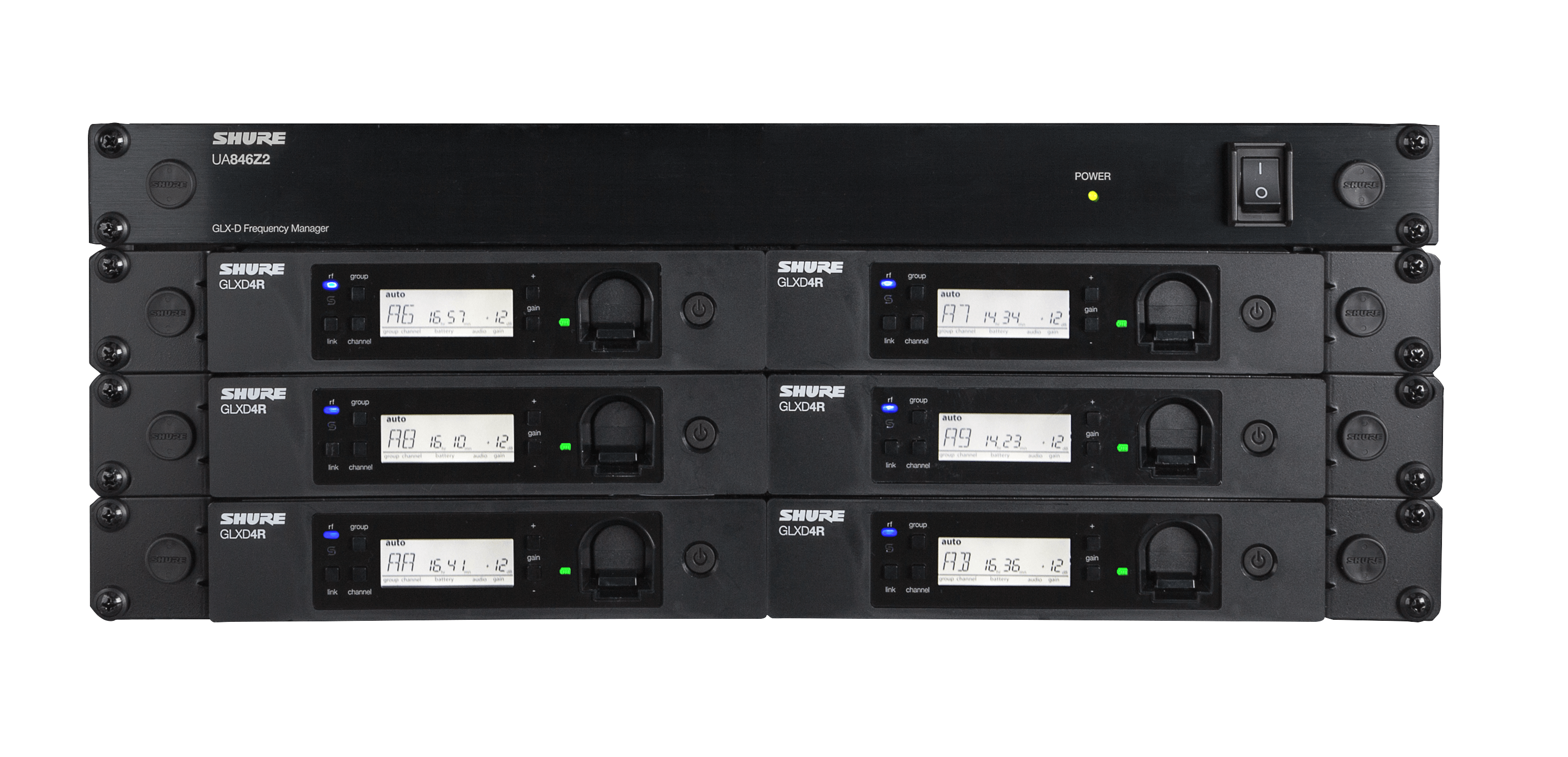Performer Magazine Reviews the Shure Wireless GLX-D Advanced Wireless Suite
- GLXD24R/B58 (handheld wireless system)
- GLXD14R (guitar wireless system)
- UA846Z2 (Frequency Manager)
Shure’s been making microphones since the dawn of electricity, and if there’s a wireless system to have, why not one from a company that’s been at the forefront of sound reproduction technology? In our opinion, the new GLX-D Advanced systems are the way to go with multiple wireless setups.
Both the guitar and vocal versions come with the GLXD4R receiver, which is a half rack unit, with an integrated charging unit for their SB902 rechargeable lithium ion battery. There’s about 16 hours of use with a full charge, which is great for bands booked for multi-night residencies or even several sets per night at their local dance hall. Both the Beta 58 and GLXD1 Bodypack use these, and it’s fantastic to see a company make a universal approach for both formats. The bright display gives relevant info on gain, battery life, and wireless channel(s) in use. The gain controls and linking functions also reside here. Rack mounting and remote antenna mounting hardware is included, as well, so integrating this into your stage rig/rack is pretty simple.
Connectivity is a breeze – simply connect the receiver to your PA system (or guitar amp). XLR and 1/4” connections are available, and linking them took us just a matter of seconds during a rehearsal gig. Once they’re linked, you never need to do it again. The transmitters intuitively find clear and open channels, which is a lifesaver if you’ve got limited setup time between acts, or for the simple reason that no one wants to fiddle with controls in a dark venue setting trying to find a channel that won’t interfere with your tunes.
Sound-wise, the 58 was really amazing; the overall signal was much stronger than a standard XLR cable in our tests and clarity was fantastic (even with movement around a stage). The GLXD1 guitar transmitter also had a nice strong signal, as well. For those who say, “Nothing beats a cable,” you’re gonna be on the losing end of that argument with us. Both units can transmit about 200 feet indoors (typical results are about 100 feet), which is more than enough for even the most demanding gigs.

Dropout was a non-issue during our demo, and that’s really the most important thing about any wireless system. Is it going to be reliable when I need it the most? Is it going to cut out if I decide to head out into the crowd during a performance? Confidence in your system is key, and we can say without question the new GLX-D Advanced gear instills the highest level of confidence in a live setting.
Now, to keep everything organized in a frequency sense is the frequency manager, which can take nine wireless systems (11 under optimal conditions) and keep each unit on a strong interference-free signal. It can also sense any issues with any of the signals, and seamlessly port the channel over to one that’s better, all on its own with no audio interruptions (again, do you really want to be fiddling with controls when it’s time to be focusing on your set?). It can also provide power to the receivers, so no need for another power strip or supply unit. Consider it a master control unit, and an insanely smart one, at that.
All in all, it’s a nice, simple, scalable system that in this configuration would only take up two rack spaces. For performers who are getting to the level where a wireless rig is the next step, it’s a big step up in performance from what you might be used to, without a steep learning curve. Price-wise, it’s not bad either, with the guitar system coming in at $549, the Beta 58 $649, and the Frequency manager at $524.
The only potential downside is that the Beta 58 microphone casing is plastic, so no mic drops! [ed note – While the casing is plastic, we’ve be assured that ALL Shure products are subject to the same quality standards and drop tests for durability purposes.]
That said, the guitar system’s body pack was a nice rugged metal design, so it makes us wonder why not a beefier construction on the microphone? Overall, it’s a system with smart, intuitive options, and not a lot of manual reading to get it up and running. Live performing artists thinking of making that jump into the wireless world should have no fear with these units on stage. In fact, they do most of the heavy lifting for you, which is really our favorite part. Add to the unparalleled clarity of signal, and you’ll wonder why you ever bothered with cables tying you down in the first place.
PROS:
Excellent sound quality, scalable, intelligent system.
CONS:
Beta 58 mic casing is plastic.
